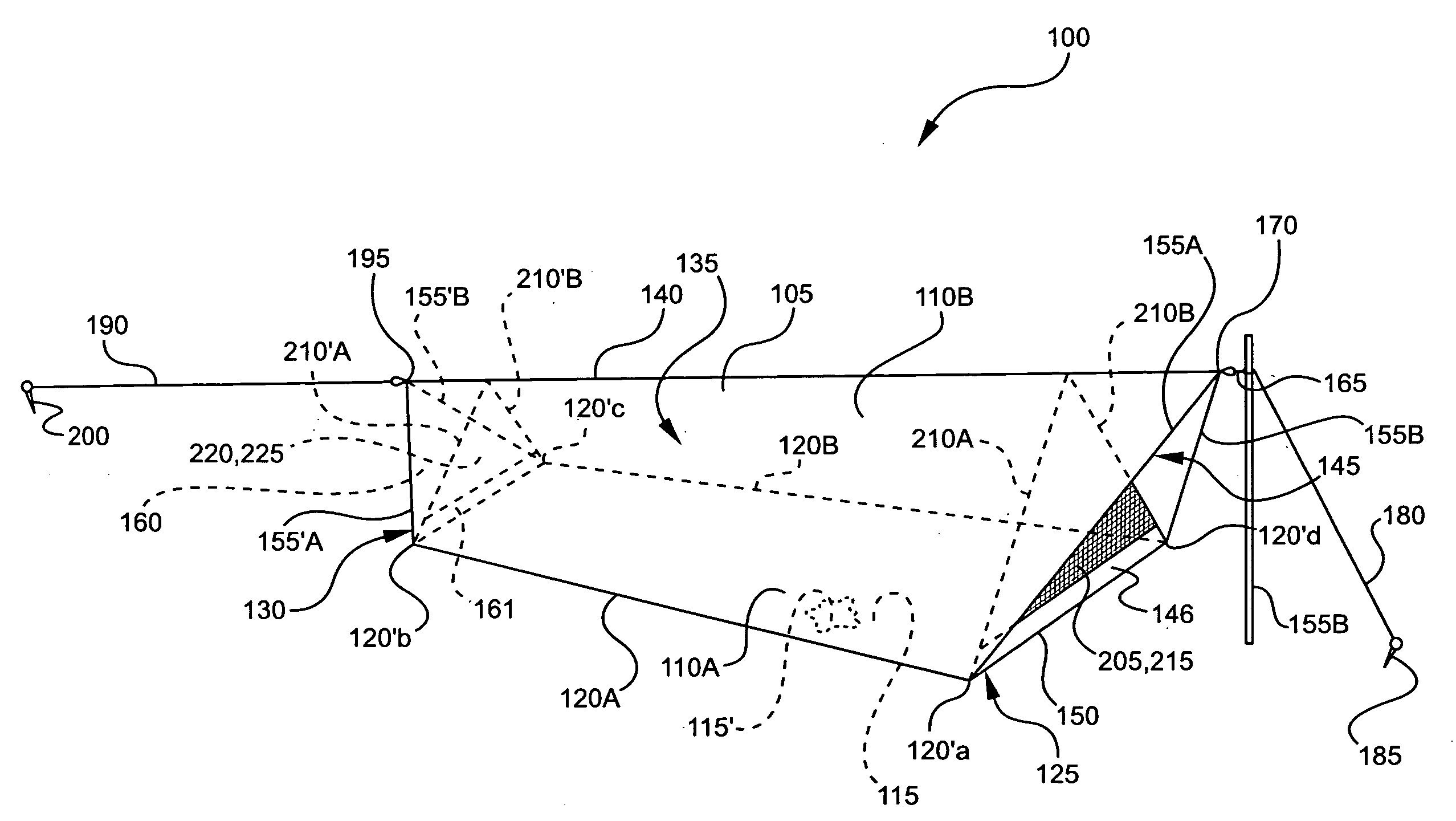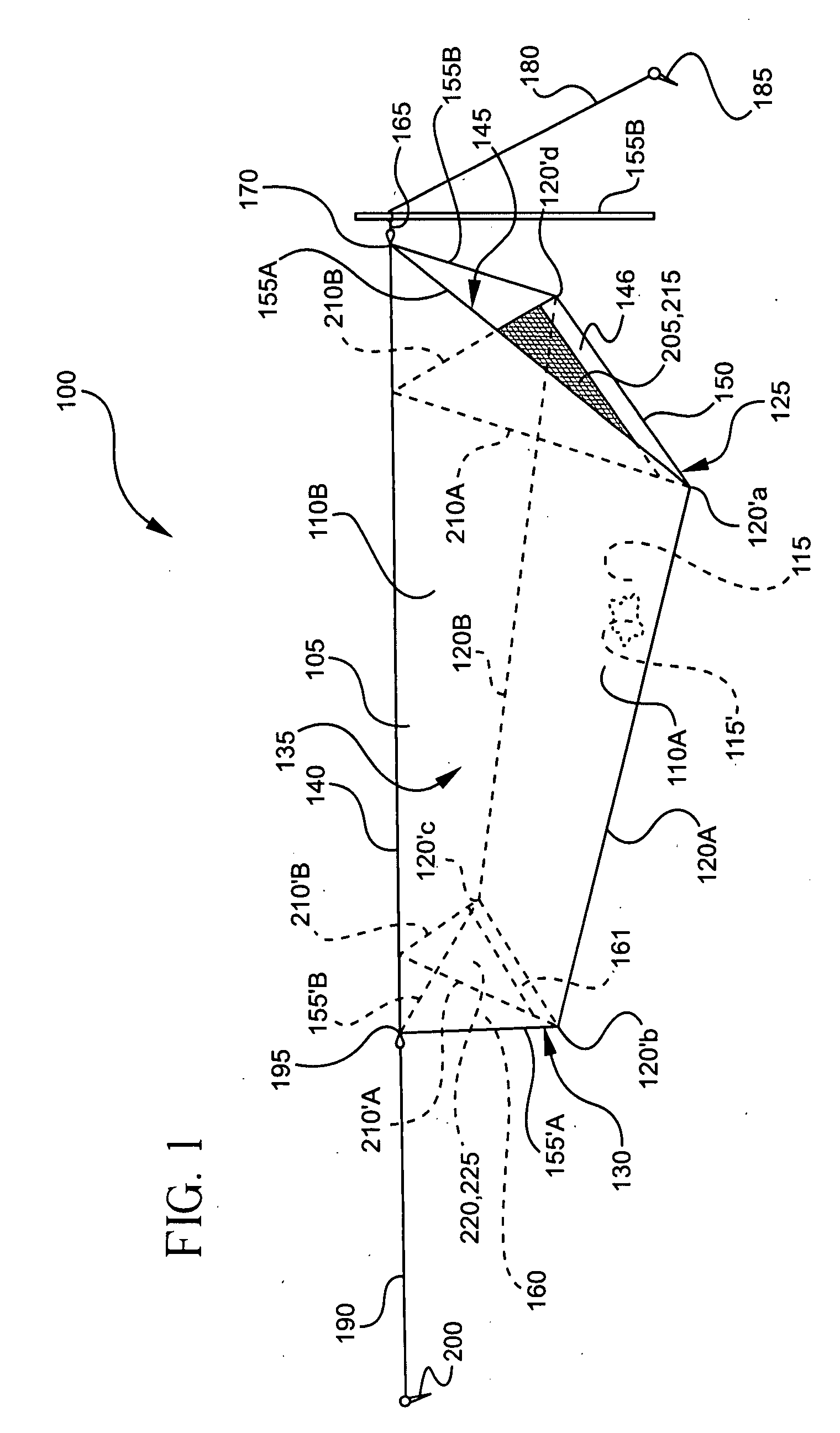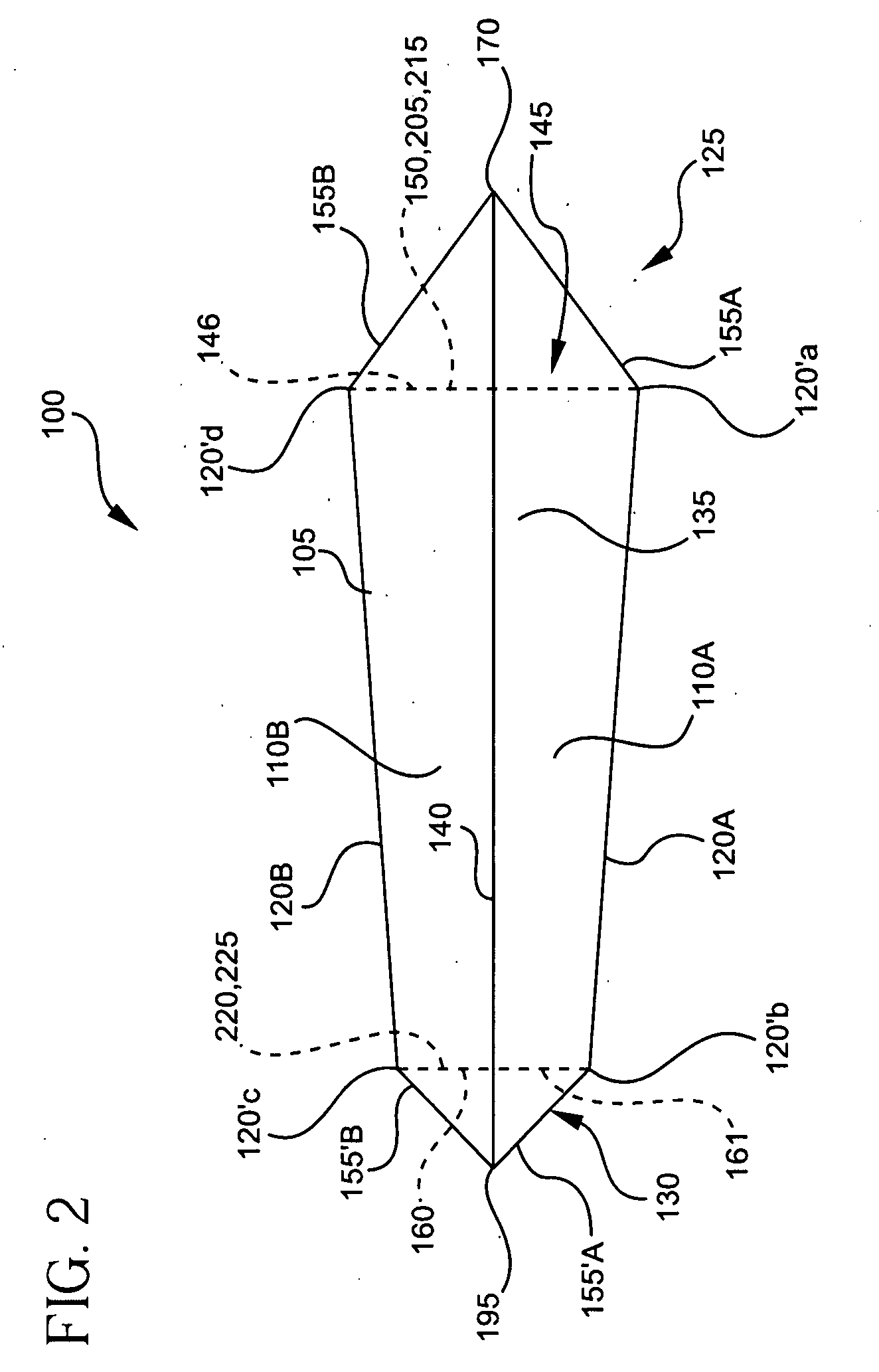Lightweight tent
- Summary
- Abstract
- Description
- Claims
- Application Information
AI Technical Summary
Benefits of technology
Problems solved by technology
Method used
Image
Examples
Embodiment Construction
[0015]A lightweight tent for use in backpacking and other outdoor activities that maximizes ventilation as well as protection from the elements and insects, all with a minimal amount of materials and weight, and with a minimal amount of required assembly, is realized by employing a sloping roof that overhangs the door, and preferably the tent's base as well at one or both ends. Additionally, the tent has door flap(s) that open from the top down. Importantly, the sloped, overhanging roof allows the tent to be erected using a single supporting member, such as a pole, while providing good ventilation and protection from the elements.
[0016]Without any loss of generality or applicability for the principles of the invention, the preferred embodiment of the lightweight tent is described with a sloping roof ridgeline that is straight. It should be clearly understood, however, that the present invention is equally applicable to other roof line shapes, such as catenary roof ridgelines, and th...
PUM
 Login to View More
Login to View More Abstract
Description
Claims
Application Information
 Login to View More
Login to View More - R&D
- Intellectual Property
- Life Sciences
- Materials
- Tech Scout
- Unparalleled Data Quality
- Higher Quality Content
- 60% Fewer Hallucinations
Browse by: Latest US Patents, China's latest patents, Technical Efficacy Thesaurus, Application Domain, Technology Topic, Popular Technical Reports.
© 2025 PatSnap. All rights reserved.Legal|Privacy policy|Modern Slavery Act Transparency Statement|Sitemap|About US| Contact US: help@patsnap.com



